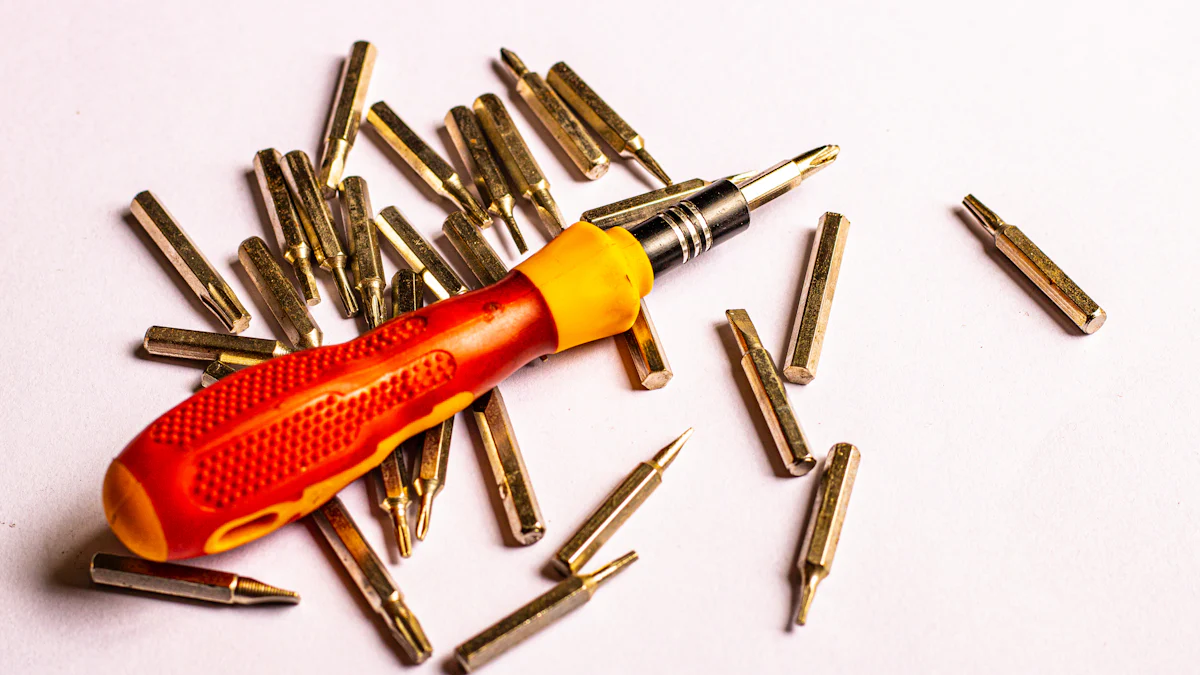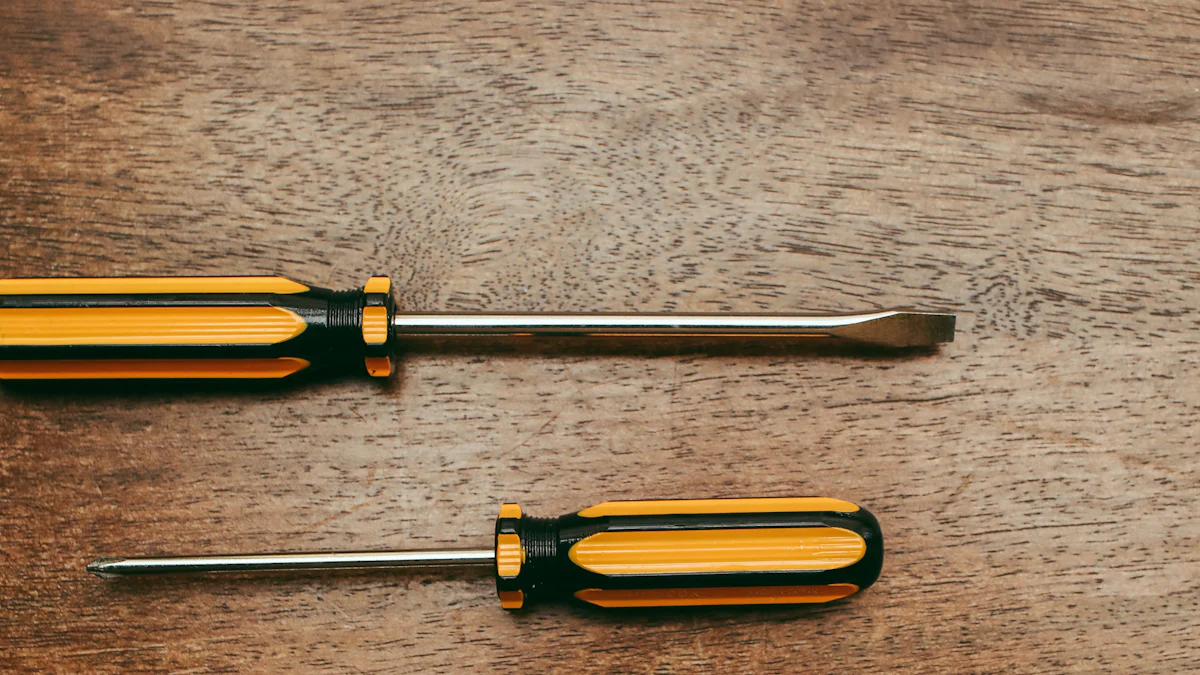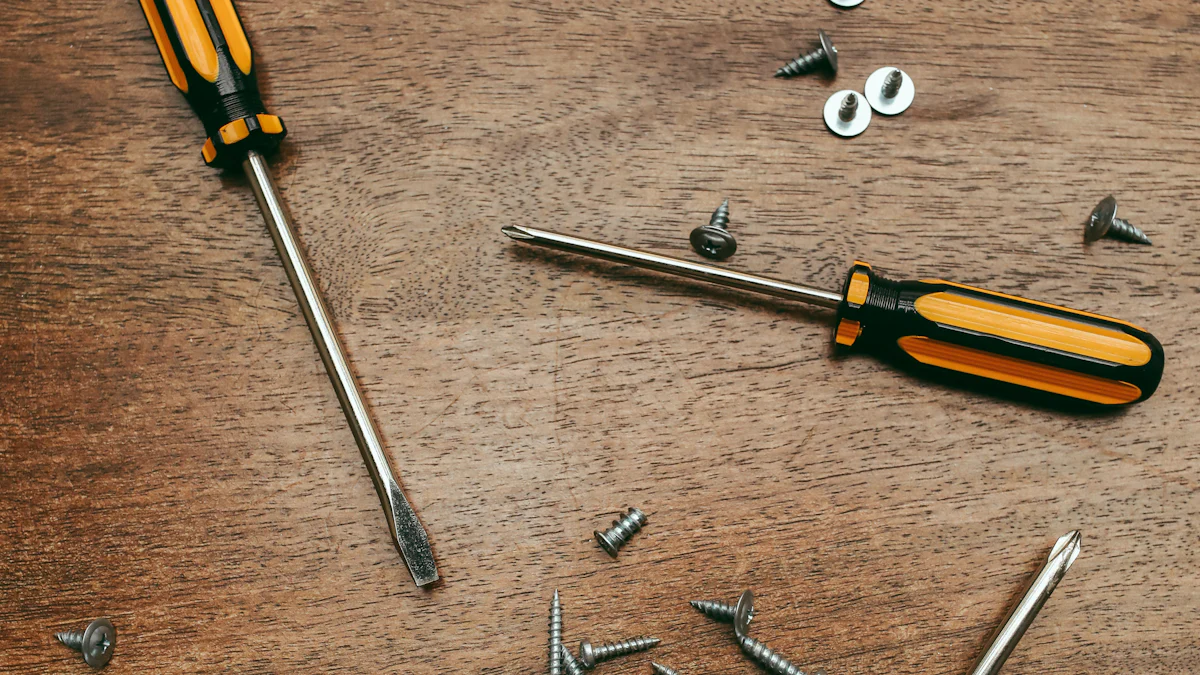
A crosshead screwdriver serves as an essential tool in many tasks. This tool fits screws with a cross-shaped recess, providing better torque and less slippage. Using the right tool ensures efficiency and safety. A crosshead screwdriver can prevent damage to both the screw and the work surface. Proper tool selection enhances the quality of your work.
Understanding Crosshead Screwdrivers

Types of Crosshead Screwdrivers
Phillips Screwdriver
A Phillips screwdriver has a cross-shaped tip designed to fit inside the cross-shaped notch of a Phillips head screw. This design provides better traction and grip when driving or removing screws. The Phillips screwdriver offers more torque and reduces the chance of slippage compared to flathead screwdrivers. This tool is commonly used in various industries, including automotive and electronics.
Pozidriv Screwdriver
A Pozidriv screwdriver features a cross-shaped tip with extra lines between the arms. These additional lines offer increased torque and reduced slip-out risk. The tip of a Pozidriv screwdriver is flatter and includes extra ribs, ensuring a tighter fit and greater control. This type of screwdriver is widely used in European countries and is seen as an improvement on the Phillips design.
Parts of a Crosshead Screwdriver
Handle
The handle of a crosshead screwdriver provides the grip needed to turn the tool. Handles are often made from plastic, rubber, or wood. A comfortable handle ensures better control and reduces hand fatigue during prolonged use.
Shaft
The shaft connects the handle to the tip of the crosshead screwdriver. Made from durable materials like steel, the shaft must withstand the torque applied during use. The length of the shaft can vary, affecting the reach and leverage of the screwdriver.
Tip
The tip of a crosshead screwdriver fits into the screw head. Precision in the tip’s design ensures a secure fit and effective torque transfer. The tip’s material and shape play a crucial role in preventing damage to the screw head.
Choosing the Right Crosshead Screwdriver
Size and Fit
Selecting the correct size of a crosshead screwdriver is essential. The tip must match the screw head size perfectly. Using the wrong size can strip the screw head and make removal difficult. Always check the screw head size before choosing a screwdriver.
Material and Durability
The material of a crosshead screwdriver affects its durability and performance. High-quality steel tips resist wear and provide better torque. Handles made from robust materials ensure longevity and comfort. Investing in a durable screwdriver enhances the quality of your work and reduces the need for frequent replacements.
Preparing to Use a Crosshead Screwdriver
Safety Precautions
Wearing Protective Gear
Always wear protective gear when using a crosshead screwdriver. Safety goggles protect your eyes from flying debris. Gloves provide a better grip and shield your hands from sharp edges. Proper footwear ensures stability and prevents slips.
Ensuring a Stable Work Environment
A stable work environment enhances safety and efficiency. Secure your workpiece with clamps or a vise. Clear the workspace of any obstructions. Adequate lighting helps you see the screw head clearly, reducing mistakes.
Selecting the Correct Screw
Matching Screw Size
Matching the screw size with the crosshead screwdriver is crucial. A mismatched size can strip the screw head. Measure the screw head diameter before selecting the screwdriver. This ensures a perfect fit and smooth operation.
Checking Screw Type
Identify the screw type before starting your task. Phillips screws have a simple cross-shaped recess. Pozidriv screws feature extra lines between the arms. Using the correct screwdriver for the screw type prevents damage and ensures efficient work.
Using a Crosshead Screwdriver Effectively

Proper Grip and Handling
Holding the Screwdriver
Hold the crosshead screwdriver with a firm grip. Position your hand on the handle to ensure maximum control. Place your thumb along one side of the handle and your fingers on the opposite side. This grip provides stability and precision.
Applying Pressure
Apply steady pressure when using a crosshead screwdriver. Press down firmly but not excessively. Too much force can damage the screw head or the work surface. Maintain consistent pressure to drive or remove the screw effectively.
Inserting and Removing Screws
Aligning the Screwdriver with the Screw
Align the tip of the crosshead screwdriver with the screw head. Ensure that the tip fits snugly into the cross-shaped recess. Misalignment can cause the screwdriver to slip, leading to potential damage or injury. Double-check the alignment before applying any pressure.
Turning the Screwdriver
Turn the crosshead screwdriver in a clockwise direction to insert a screw. Use a smooth, controlled motion. Avoid sudden twists or jerks. For removing a screw, turn the screwdriver counterclockwise. Maintain a steady pace to prevent stripping the screw head.
Common Mistakes to Avoid
Using the Wrong Size
Avoid using a crosshead screwdriver that does not match the screw size. A mismatched size can strip the screw head and make removal difficult. Always check the screw head size before selecting a screwdriver. The National Safety Council advises using the correct size and type of screwdriver to prevent slippage and damage.
Applying Too Much Force
Do not apply excessive force when using a crosshead screwdriver. Too much pressure can damage both the screw and the work surface. Use a controlled amount of force to ensure effective torque transfer. If the screw does not move easily, reassess the alignment and fit of the screwdriver.
Maintenance and Care of Crosshead Screwdrivers
Cleaning the Screwdriver
Removing Debris
Regular cleaning ensures that your crosshead screwdriver remains effective. Use a small brush to remove debris from the tip. This prevents buildup that can affect performance. A clean tip fits better into screw heads, reducing the risk of slippage.
Wiping Down the Handle
Keep the handle of your crosshead screwdriver clean. Wipe it down with a damp cloth to remove grease and dirt. A clean handle provides a better grip and reduces the chance of injury. Avoid using harsh chemicals that can damage the material of the handle.
Storing the Screwdriver
Keeping in a Tool Box
Store your crosshead screwdriver in a tool box. This protects the tool from damage and keeps it organized. A dedicated spot in the tool box ensures that you can find the screwdriver easily when needed. Proper storage extends the life of your tool.
Avoiding Moisture
Moisture can cause rust on the metal parts of your crosshead screwdriver. Store the tool in a dry place to prevent this. Use silica gel packs in your tool box to absorb moisture. Rust can weaken the tool and reduce its effectiveness.
Review the key points discussed in this guide. Understand the types and parts of crosshead screwdrivers. Choose the right tool for the job. Follow safety precautions and proper techniques. Maintain and care for your tools.
Practice these tips to improve your skills. Apply the knowledge gained to ensure efficient and safe use of crosshead screwdrivers.
Using tools correctly prevents damage and enhances work quality. Treat your tools with care, just as you would your hands. Proper tool use ensures safety and effectiveness in every task.
See Also
Scooter Upgrades: High-Quality Parts for Maximum Performance
Discovering Diverse Sock Options for Both Genders
